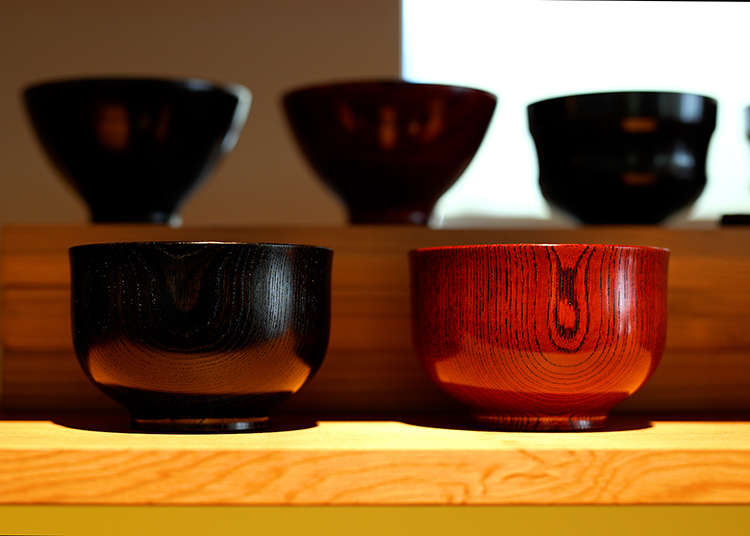
Lacquerware, a traditional Japanese craft, gains its elegance and luxury from multiple layers of “urushi (lacquer tree sap).” With use, it becomes even more lustrous and translucent, often lasting 20 to 30 years. This technique of applying sap to wooden items showcases the finesse of Japanese woodworking.
To delve deeper into this craft and its captivating allure, we visited the Yamanaka Onsen district in Kaga City, Ishikawa Prefecture, a renowned hub for lacquerware production in Japan.
*This article includes advertising content.
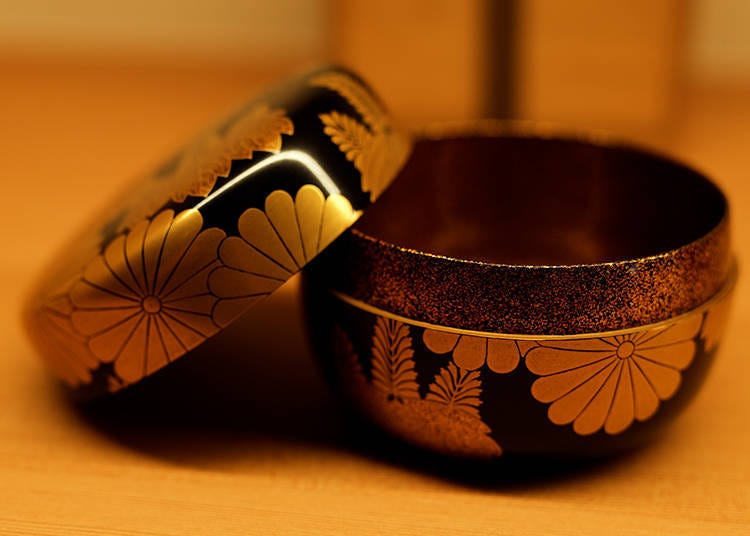
From Tree to Treasure – Japan’s National Tradition of Woodcrafts
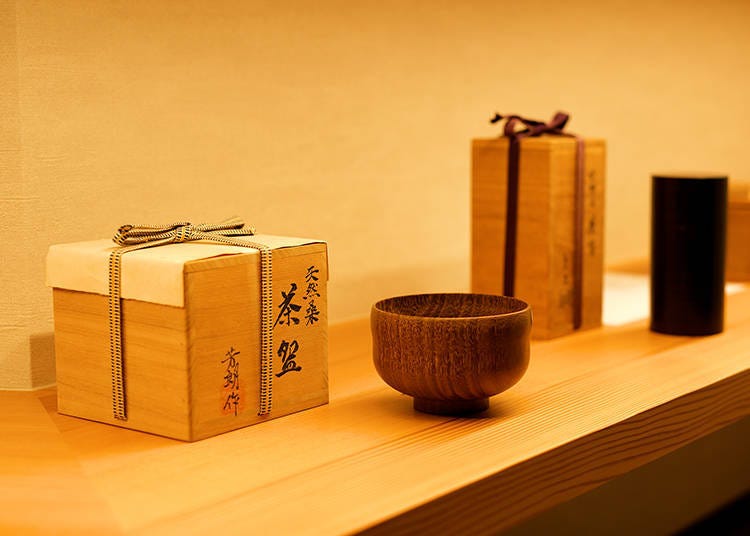
As a country that has lived in harmony with trees, various wooden crafts have been cultivated throughout the nation.
“Magewappa” is a container made from thinly shaved Sugi or Hinoki boards that are processed into cylindrical shapes. It has long served as a lunch box and a “rice bin” for storing cooked rice.
Beginning with Omagari in Akita Prefecture, numerous local manufacturers are found throughout Japan. Speaking of Japanese woodwork, “yosegi-zaiku (type of marquetry)” should not be overlooked. Geometric patterns are formed by combining the grains of different colored trees. It is a woodworking technique unique to a country like Japan, where a wide variety of woods can be found.
Japanese Lacquerware - Beloved Since the Earliest of Times
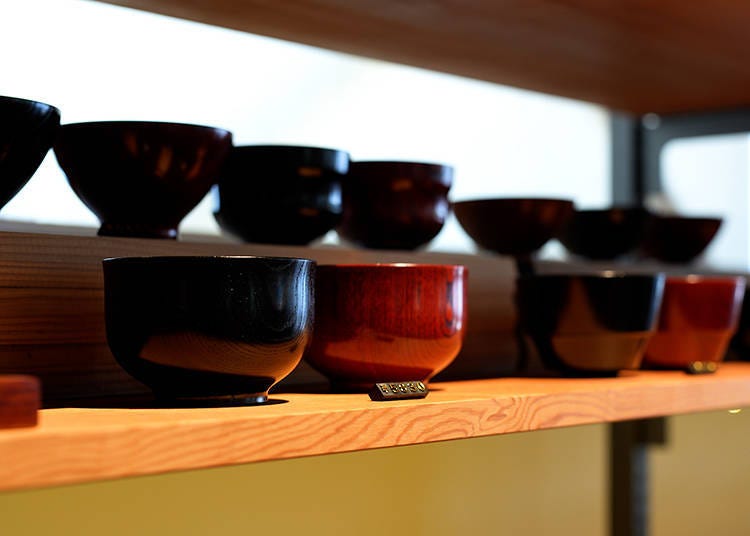
Lacquerware is among the traditional Japanese woodworking crafts. It is made by coating wood with lacquer sap extracted from the deciduous tree Urushi. Urushi lacquer is a beautiful, glossy, and durable coating agent that imparts a lustrous and distinctive texture.
漆器の歴史は非常に古く、アジアを中心に広まりましたが、日本では約9000年前から存在していたとされており、現在世界最古の漆器とされています。食器や茶道具、文具などの日用品としてだけではなく、装飾品や贈答品としても重宝されています。
While the history of lacquerware is very old and has spread mainly in Asia, it is believed to have existed in Japan for roughly 9,000 years and is considered the oldest lacquerware in the world. Lacquerware is valued not only as tableware, tea ceremony utensils, stationery, and other daily necessities but also as decorative accessories and gifts.
Aged to Perfection - Japanese Lacquerware with Time Becomes More Tasteful
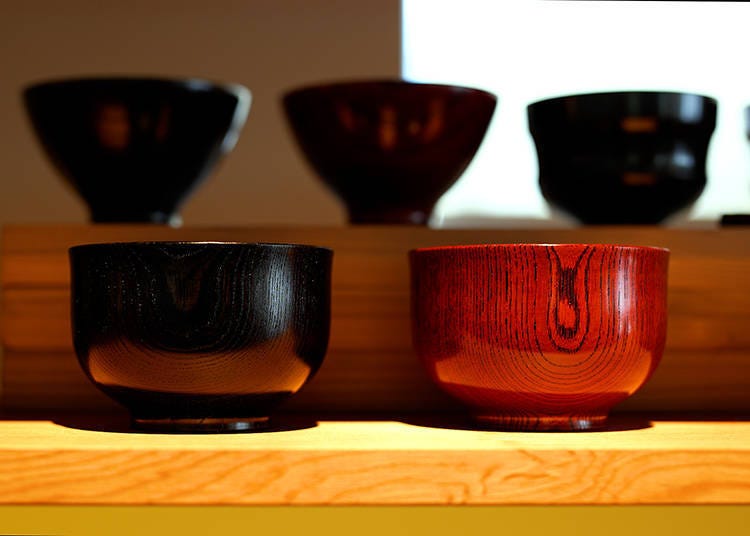

The most attractive feature of lacquerware is its glossy sheen. This glossy luster is unique in that it will gradually mature over the years of continuous use. When lacquer is applied and cured, the color of the lacquer exhibits a translucent characteristic, and as the years go by, the lacquer wears off, and the inner layer gradually emerges.
Initially, it appears silky and lavish, but as it continues to be used, it gradually becomes more translucent. Lacquerware is often seen as “nurturing the craft,” and the changes in its appearance through the years will surely inspire a sense of attachment.
Another appeal of lacquerware is its resistance to bacteria, as urushiol, which is generated during the process of drying lacquer, has an antibacterial effect. As it inhibits the growth of bacteria, mold, and other microorganisms, it is safe to use as daily tableware for children and older adults.
To Yamanaka Onsen in Ishikawa Prefecture, the Birthplace of Yamanaka Lacquerware
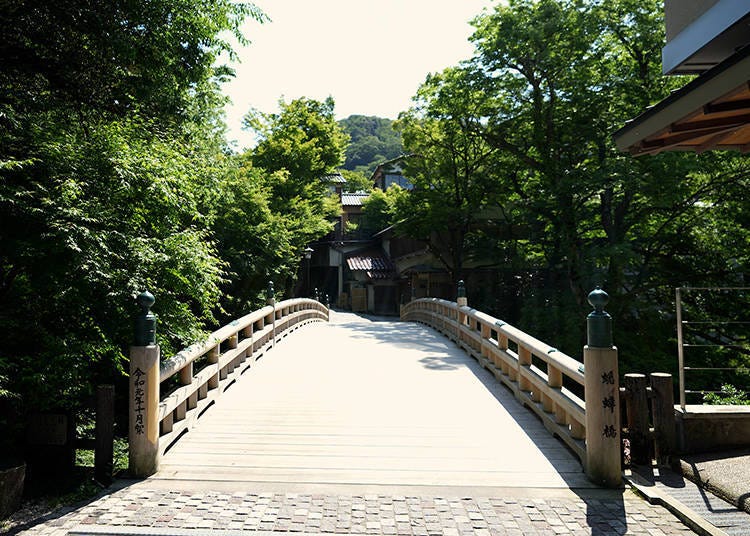
Owing to the nationwide spread of lacquerware production during the Edo period (1603–1868), many regions in Japan produce lacquerware stretching from the north to the south, and each region has its own subtly unique way of creating lacquerware.
To learn more about the appeal of lacquerware, we visited the Yamanaka Onsen district in Kaga City, Ishikawa Prefecture. Manufactured here, Yamanaka lacquerware has a history of roughly 400 years, and even today, lacquerware production is thriving in this traditional hot spring resort surrounded by rich nature.
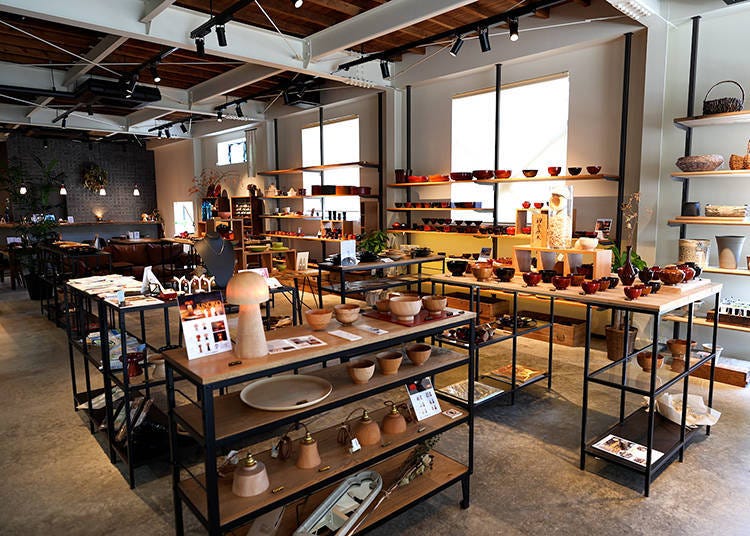
Founded over 100 years ago, Morita Shikki Co., Ltd.’s workshop houses a store and cafe that specializes in lacquerware. The store’s calm interior features bowls, small plates, trays, cups, cutlery, and other tableware, as well as interior decor and accessories created through techniques adapted from the art of lacquerware making.
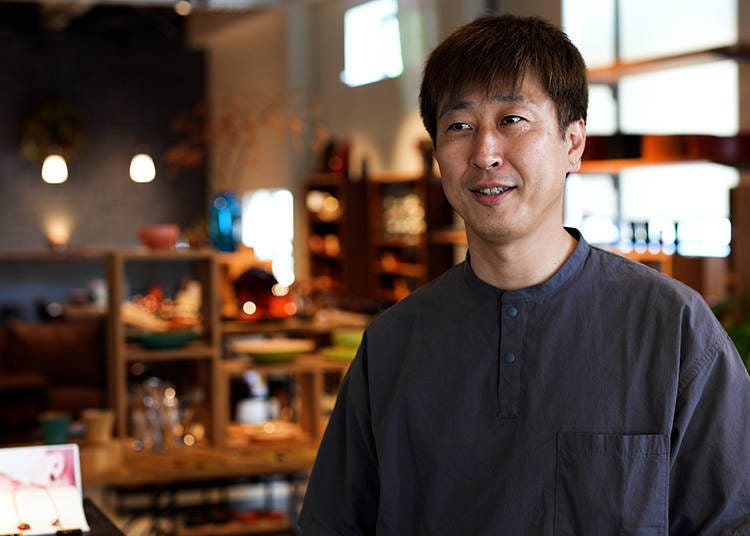
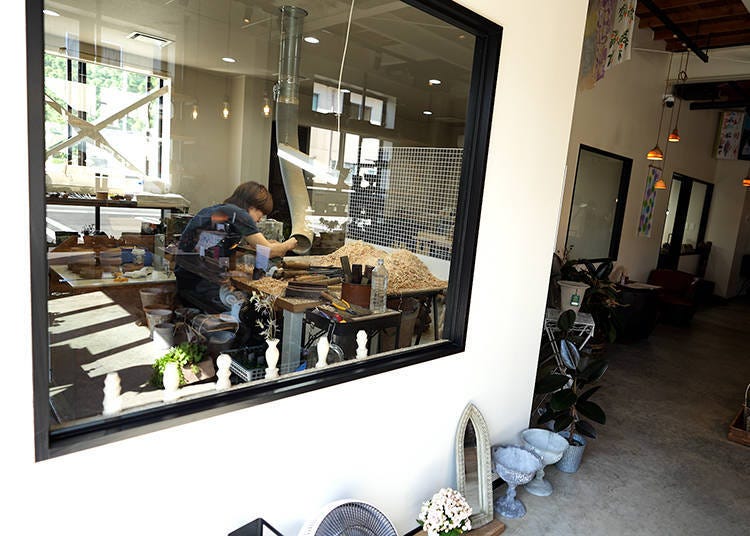
Takahito Morita, president of Morita Shikki, has been exposed to lacquer since childhood and has experience living abroad. He founded the workshop with the hopes that “tourists from Japan and abroad will be able to experience the depth and charm of lacquerware, a craft that requires a great deal of time and effort to produce.”
So Thin That Even Light Shines Through: How Wood Bases Determine the Lacquerware Shape
Let’s move on to the workshop and see how Yamanaka lacquerware is made. Lacquerware making is a divided labor system, with each craftsperson working independently in their own room in the workshop.

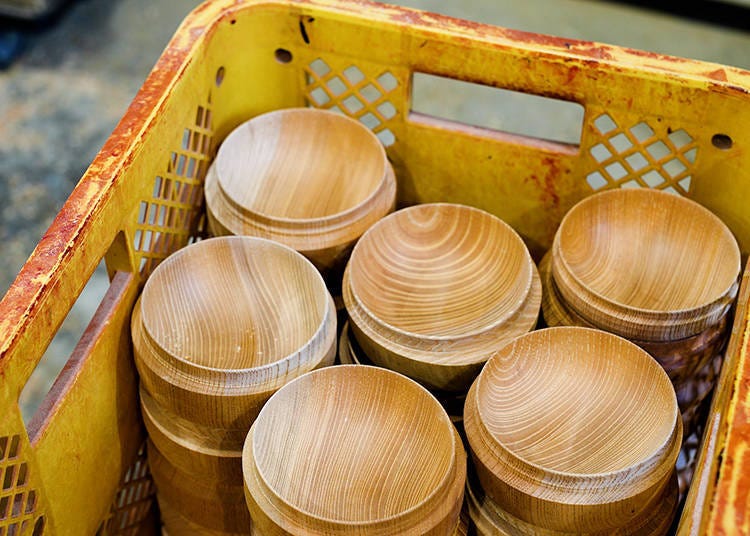
The first process of making lacquerware begins with preparing the base, which is formed by carving out a shape from natural wood. There are two types of wood base: “tategi,” in which a log is cut into round slices, and “yokogi,” in which the log is cut into vertical planks to which Yamanaka Lacquerware uses “tategi.”

Tategi minimizes distortion and allows for “usubiki (thin-hewn),” a technique unique to Yamanaka lacquerware. While turning the rotary wheel, the wood is thinned to the absolute limit, making it so thin that light can penetrate through it.

This has led to the commercialization of wine cups, glasses for sake, and even lampshades and other interior items.
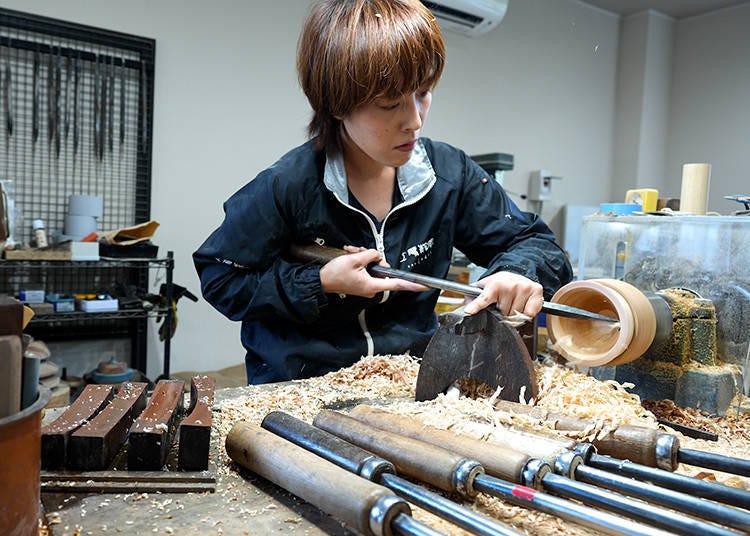

“The first duty of a craftsperson is to prepare the blade to shave the wood,” says a Morita Shikki wood craftsperson. Each craftsperson burns 30 to 40 blades in a furnace to make their own blades, using four to five different blades to make a single bowl. While handling the heavy, sharp blades as if they were their own fingers, they delicately craft thin wooden bases.

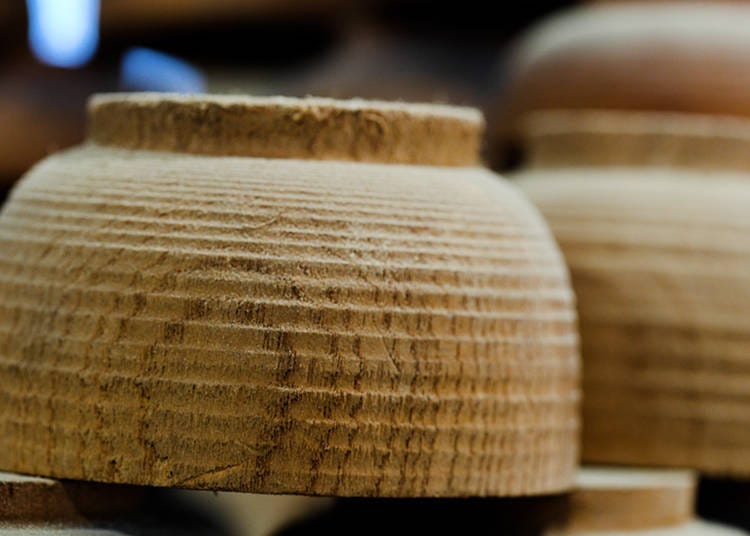
Another distinctive technique of Yamanaka lacquerware is “kashokubiki (decorative carving).” This is the process of decorating the surface of a container by rotating the thinly processed wood at high speed and applying the blade while shifting it in millimeter increments. There are more than 20 types of patterns, including “sensuji,” in which uniform, narrow grooves are made, and the combination of patterns reflects the individual craftsperson’s or workshop’s unique style.
The Basecoat Process Determines the Sturdiness and Sleekness of Lacquerware
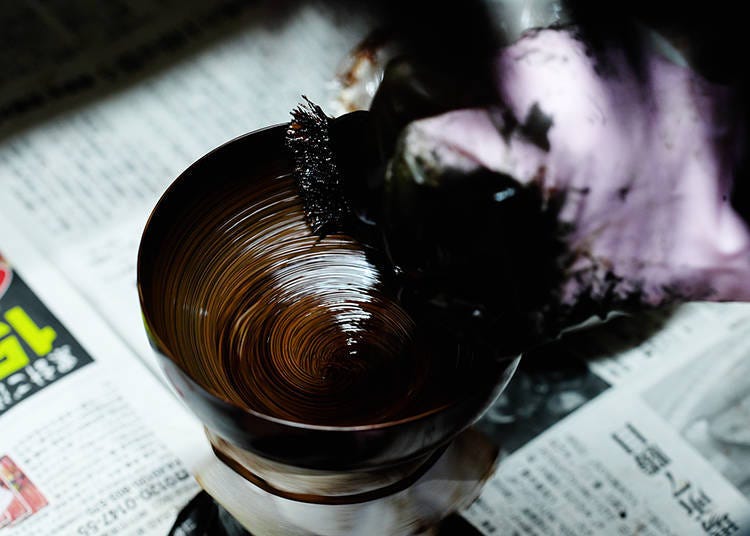
The next step after building the base is the basecoat process. Priming the wood base is an important process that protects the lacquerware from everyday damage, making it resistant to dryness and cracking.
“Kiurushi (raw lacquer solution)” is mixed with “jinoko,” a powdered fossilized diatom shell, and soaked into the wood to harden the base. Then, the lacquer base, mixed with jinoko, is carefully applied with a brush. After the base lacquer has dried, it is repeatedly sanded and polished with sandpaper.
This process is repeated several times to achieve a sturdy and smooth lacquerware. Morita Shikki performs this process 12 to 14 times for a single piece of lacquerware. It is a labor-intensive process, but pursuing a smooth and sturdy surface is a unique aspect of Japanese craftsmanship.

While most lacquerware has a thick lacquer finish, Yamanaka lacquerware is notable for its use of the grain of the wood as it is. The woodworking techniques are so highly recognized that they are known as “Yamanaka Woodworker,” and it is no exaggeration to say that the quality of the woodwork is brought out from the basecoat process.
No Shoes Allowed - Topcoat Finishing Process for the Perfect Silkiness
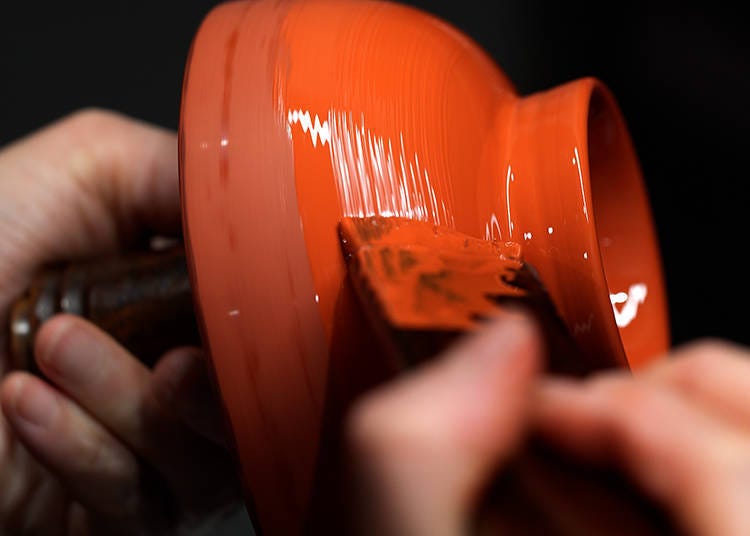
Once the base coat is completed, they move on to the topcoat process, in which the parts of the lacquerware that come into direct contact with the skin are coated. Since the luster of the lacquerware is determined by this top-coating process, the craftsperson uses nearly ten different brushes to create a unique smooth luster.
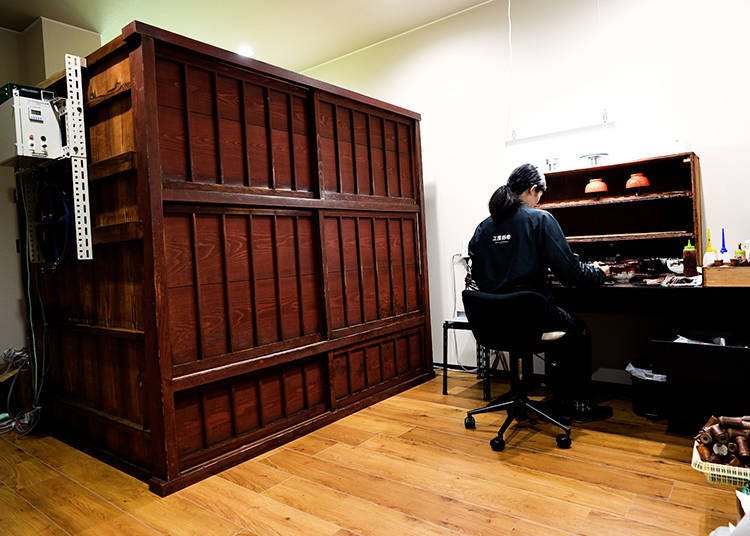
The room where the topcoat is applied is controlled to prevent any dust or specks from attaching to the coating; therefore, there is a strict no-shoe policy, and all clothes must be dusted upon entering the room. After carefully applying the topcoat, the dust floating on the surface is carefully removed one by one with the tip of a bamboo skewer.

The lacquer is then placed in a wooden cabinet called a lacquer bath and allowed to dry for approximately one week while the temperature and humidity are adjusted. Since lacquer is a natural substance, it is easily affected by the season and climate. Water is sprayed inside the lacquer bath to control the humidity, and the work is monitored daily.
The perfect beauty of Japanese lacquerware is created not only by the technique of painting and finishing but also by the meticulous monitoring of temperature and humidity and the thorough attention to detail by the craftspeople, who do not overlook even a single speck of dust.
Every Step Is Done by Hand and Is Truly One-of-a-kind - Applying Patterns with Gold or Silver Powder “Maki-e”

The final process of lacquerware making is “maki-e.” Uniquely invented in Japan, Maki-e is a technique of drawing pictures or patterns with lacquer and sprinkling gold or silver powder on the surface to make it adhere. Maki-e craftspeople accumulate new ideas by referring to a collection of designs daily.
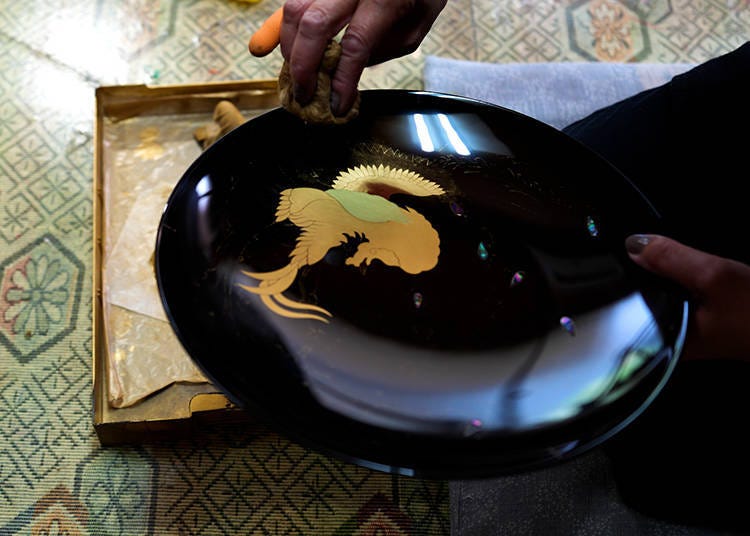
The process of applying gold powder is where the craftspeople’s technique shines the brightest. They skilfully determine whether or not the lacquer is dry and apply the sprinkles at the best moment. If applied too early, the gold powder will peel off during the glazing process, and if applied too late, it will not properly adhere to the lacquer. It takes many years of training to determine the best timing.

In recent years, more and more easily made lacquerware in which patterns are simply printed on the top-coated lacquerware is being produced. However, “When human hands are involved, the craftsperson’s taste comes to life. A perfect pattern is without flavor, making it boring,” says a maki-e craftsperson. Since lacquerware grows more attractive as it is “nurtured,” choosing maki-e lacquerware that shows the craftsperson’s unique taste is worthwhile.
Japanese Lacquerware to Be Passed Down for Generations
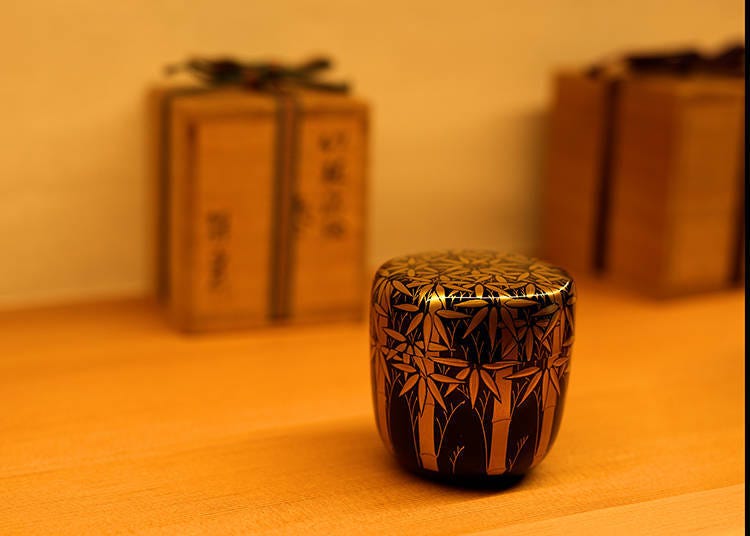
Lacquerware, a hallmark of Japanese artisanal skill, uniquely grows more personal with use. Its appeal lies in the way its texture evolves with each touch. In Japan, it’s a tradition for families to pass down these cherished pieces from generation to generation. Why not make lacquerware a part of your family’s everyday life, creating a legacy that lasts for generations?
- Area
- Category
-
Sponsor Content Must-See
*Prices and options mentioned are subject to change.
*Unless stated otherwise, all prices include tax.
Limited time offer: 10% discount coupons available now!
-

Everything You Need To Know About the Kyoto-Osaka Sightseeing Pass
-

15 Must-Try Sushi Restaurants in Tokyo (+5 Trending Areas to Explore for Foodies)
-

Step Into the Story: Inside Immersive Fort Tokyo
-

The Complete Guide to the Kintetsu Rail Pass
-

12 Unique & Fun Tokyo Food Tours to Enjoy in 2024
-

A Complete Guide to the JR West Kansai Area Pass
-
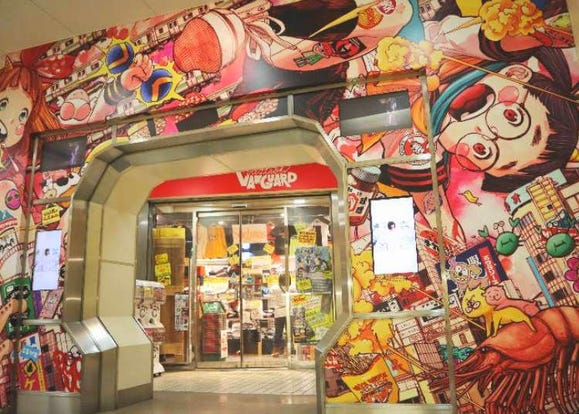
Jam-packed with Tokyo Culture! Shibuya’s VILLAGE VANGUARD: Ultimate shopping guide!
-
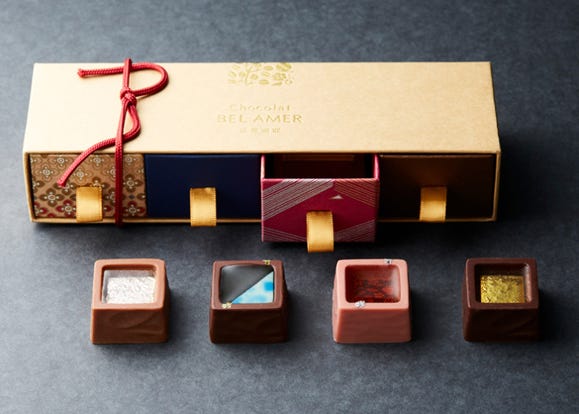
Valentine's Day in Japan 2021: Recommended DIY Sweets Kits & Chocolates You Can Order From Home!
-
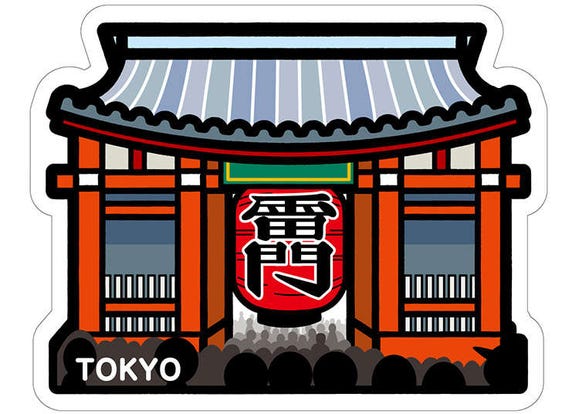
The Top 5 Unique Japanese Souvenirs Only Available in Tokyo
-
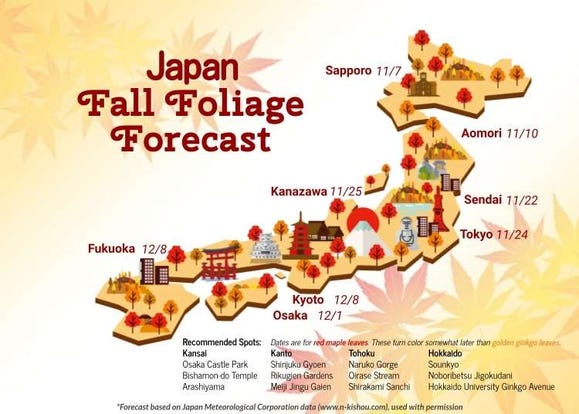
Autumn in Japan 2024: Fall Foliage Forecast & Where to Enjoy the Colorful Leaves (+Tour Info)
-

Secrets to Shopping in Japan: Guide to Annual Sales in Japan & Where to Shop
-
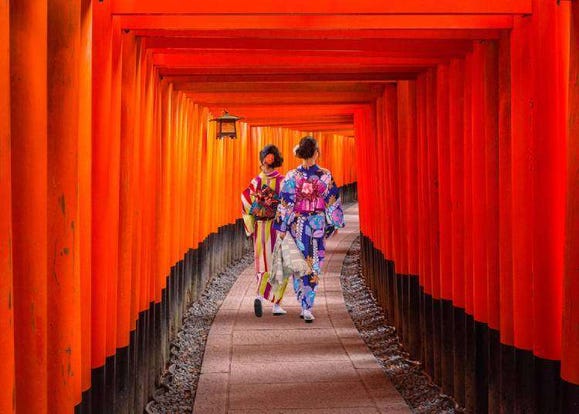
10 Major Cities in Japan: Which One Should Top Your Bucket List?
- #best ramen tokyo
- #what to buy in ameyoko
- #what to bring to japan
- #new years in tokyo
- #best izakaya shinjuku
- #things to do tokyo
- #japanese nail trends
- #what to do in odaiba
- #onsen tattoo friendly tokyo
- #daiso
- #best sushi ginza
- #japanese convenience store snacks
- #best yakiniku shibuya
- #japanese fashion culture
- #best japanese soft drinks












